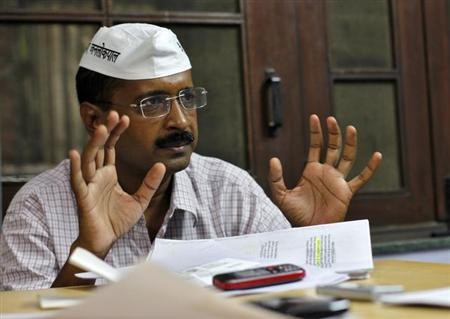
The election verdicts in Delhi seem to have given the runners-up - Aam Aadmi Party (AAP), an upper hand over the Bharatiya Janata Party (BJP), which became the single largest party in the capital. Conscious of the strong anti-corruption stance, BJP is in no hurry to form a government despite being the winners.
Arvind Kejriwal's AAP, an anti-corruption party, has secured 28 seats in Delhi, decimating the Congress and crippling chances for the BJP as well.
In order to form a government in the 70-member Delhi Assembly, a party needs a majority of 36 seats. BJP including its ally Shiromani Akali Dal has 32; AAP has 28 and Congress just eight. And now with BJP stating its intention to be in the opposition, a solution that includes AAP is the only plausible way to avoid the President's rule.
If the President's rule is imposed, then Delhi will once again have to go for another election in the next six months itself. Voted are in favour of a stable and corruption-free government, and now it is upto national parties BJP and Congress to form an alliance with AAP.
The only way to bring in a stable government is through brokering a deal - it has to be BJP and AAP, Congress and AAP, or BJP and Congress. But the most stable solution would be ensuring that both BJP and Congress give AAP unconditional support to run the government for a year.
The meteoric rise of the AAP party, being merely 13 months old, shows the favour it has found among the general public. By lending their support to AAP, both BJP and Congress may have a chance at touching the nerve of the common man.
While AAP leader Kejriwal has strongly declined to form any alliance with either BJP or Congress, the solution to the stalemate is probably both BJP and Congress coming in support of AAP.
The strongest alliance, however, towards forming the government can be made if AAP and BJP reach an agreement.
BJP leader Arun Jailtley on Monday begs to differ saying that AAP could receive outside support from Congress. "When there are no clear majorities, the government formation is an art of the possible. The Congress Party can give the AAP outside support in order to form a government. In Power, such a party would be like a fish out of water. It is possible to make exaggerated promises, and capture the imagination of a few by making unimplementable promises. The strategy of the party is to avoid power rather than be in a position to implement the unimplementable," Jailtley said in a statement on Monday.
There is enough reasons for BJP to 'shy away' from horse trading, the lessons of the 1996 comedy of the coalition at the Centre which still hangs fresh in the minds of many. The May 1996 General Elections saw BJP emerging as the single-largest party in the Lok Sabha, but the BJP coalition lasted only for 13 days. Then came the 14-party coalition led by the Janata Dal and HD Deve Gowda became the Prime Minister lasting in power for less than a year.












